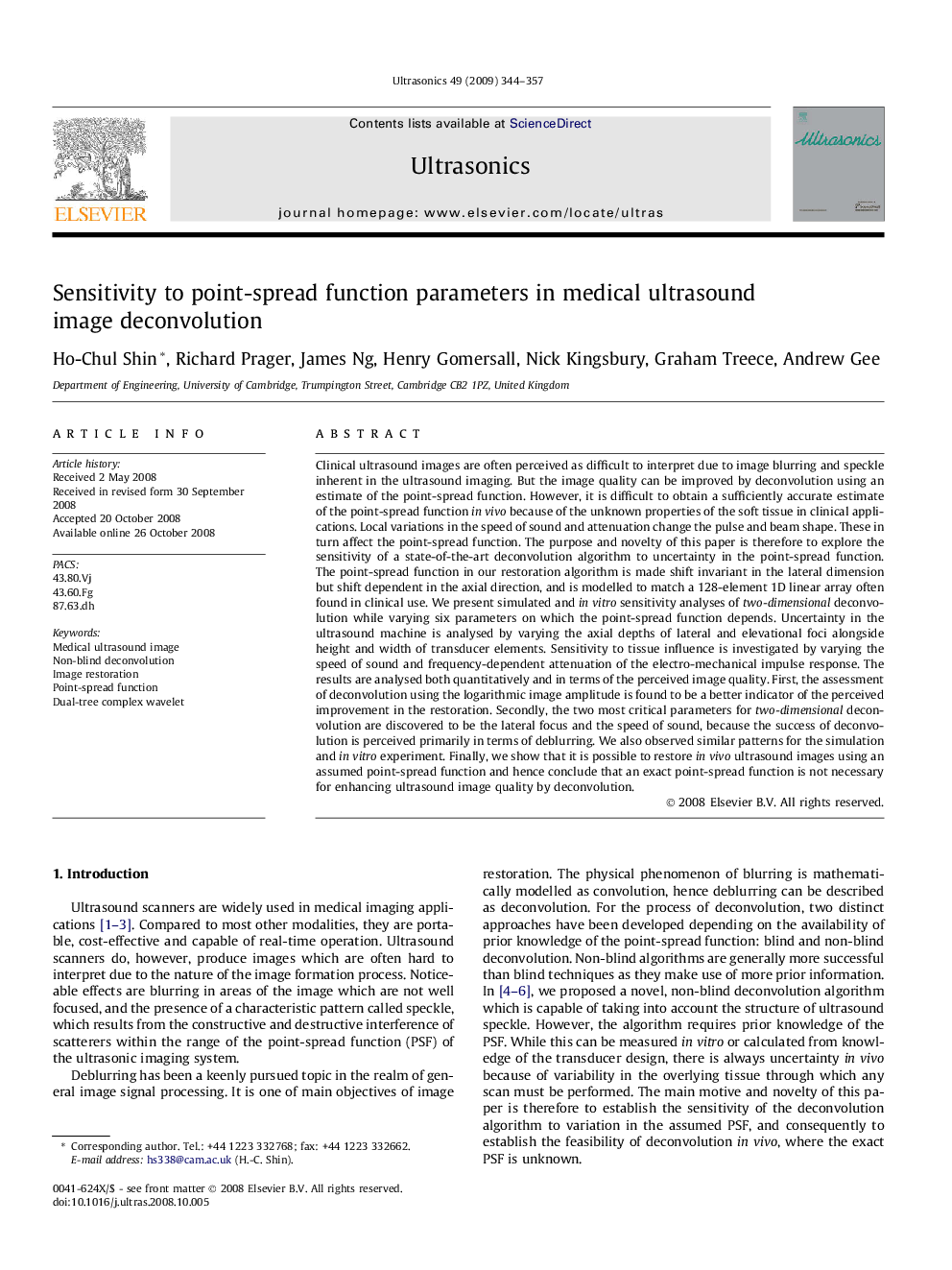| Article ID | Journal | Published Year | Pages | File Type |
|---|---|---|---|---|
| 1759642 | Ultrasonics | 2009 | 14 Pages |
Clinical ultrasound images are often perceived as difficult to interpret due to image blurring and speckle inherent in the ultrasound imaging. But the image quality can be improved by deconvolution using an estimate of the point-spread function. However, it is difficult to obtain a sufficiently accurate estimate of the point-spread function in vivo because of the unknown properties of the soft tissue in clinical applications. Local variations in the speed of sound and attenuation change the pulse and beam shape. These in turn affect the point-spread function. The purpose and novelty of this paper is therefore to explore the sensitivity of a state-of-the-art deconvolution algorithm to uncertainty in the point-spread function. The point-spread function in our restoration algorithm is made shift invariant in the lateral dimension but shift dependent in the axial direction, and is modelled to match a 128-element 1D linear array often found in clinical use. We present simulated and in vitro sensitivity analyses of two-dimensional deconvolution while varying six parameters on which the point-spread function depends. Uncertainty in the ultrasound machine is analysed by varying the axial depths of lateral and elevational foci alongside height and width of transducer elements. Sensitivity to tissue influence is investigated by varying the speed of sound and frequency-dependent attenuation of the electro-mechanical impulse response. The results are analysed both quantitatively and in terms of the perceived image quality. First, the assessment of deconvolution using the logarithmic image amplitude is found to be a better indicator of the perceived improvement in the restoration. Secondly, the two most critical parameters for two-dimensional deconvolution are discovered to be the lateral focus and the speed of sound, because the success of deconvolution is perceived primarily in terms of deblurring. We also observed similar patterns for the simulation and in vitro experiment. Finally, we show that it is possible to restore in vivo ultrasound images using an assumed point-spread function and hence conclude that an exact point-spread function is not necessary for enhancing ultrasound image quality by deconvolution.
